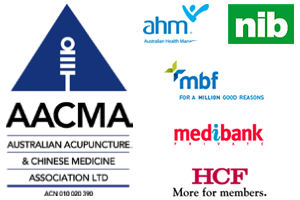Researchers conclude that acupuncture is effective for the treatment of chronic fatigue syndrome (CFS). A remarkable finding was made in this study. Acupuncture combined with interferential current therapy increased the success rate of acupuncture. The total effective rate of acupuncture as a standalone procedure was 80.0%. Adding interferential current therapy to the regime of care increased the total effective rate to 93.3%.
A complete recovery rate of 20.0% was achieved with acupuncture as a standalone therapy for CFS patients in 20 office visits. In the same period of time and same number of treatments, the combined therapy approach of acupuncture plus interferential current therapy (ICT) raised the complete recovery rate to 43.3%. As a result the researchers conclude, “Electroacupuncture plus ICT can produce a remarkable efficacy in treating CFS.”
The total effective rate and complete recovery rate increased significantly by adding ICT to acupuncture therapy. This is an important finding now that studies indicate that CFS exceeds 10% of the white-collar working population. CFS is characterized by extreme fatigue often without an identifiable biochemical or organic cause. CFS may also involve musculoskeletal pain, sleep disorders, headaches, impaired cognition and memory, swollen or tender lymph nodes, chronic sore throat, persistent low grade fever, mental illness and exhaustion after physical or mental exertion.
Doctors and scientists note that the etiology may not be known or may be due to viral infections, immune system disorders and/or hormonal imbalances. Chronic fatigue syndrome occurs at any age but is most prevalent in the 40s and 50s. Women are more susceptible to CFS. Patients that are either overweight or inactive have a higher incidence of CFS. Many sources cite stress as a causative, aggravating and/or exacerbating factor. Complications due to CFS may be restrictions on activities of daily living, increases in work absenteeism and depression.
This CFS study was conducted by researchers from the Taihe Hospital affiliated with the Department of Acupuncture and Moxibustion, Hubei University of Chinese Medicine. Diagnostic criteria for inclusion followed standard Centers for Disease Control and Prevention (CDC) guidelines. Patients were required to have at least 6 months of unexplained persistent or recurrent extreme fatigue that is debilitating and cannot be relieved by rest. Activities of daily living must have shown a decrease by at least 50%. Each patient must have had at least 4 of the following symptoms: persistent post-exertion fatigue, sleep dysfunction, musculoskeletal pain, pharyngolaryngitis, cognition impairment or memory loss, joint pain that is not accompanied by redness or swelling, lymph node swelling in the armpit or neck, headaches.
The type of acupuncture employed in the study was electroacupuncture. The process was as follows. Once deqi arrived at the acupoints, manual acupuncture was applied with an even reinforcing-reducing method. The needles were retained for 20 minutes. Next, between 4-6 acupuncture points were given electroacupuncture stimulation using a sparse-dense wave to a perceptibly tolerable intensity level. The electroacupuncture device was machine G-6805 produced by Suzhou Hwato Medical Instrument Co. Ltd.
Acupuncture points used in the study were: GV20 (Baihui), CV4 (Guanyuan), CV6 (Qihai), BL25 (Xinshu), BL18 (Ganshu), BL13 (Feishu), BL20 (Pishu), BL23 (Shenshu), PC6 (Neiguan), HT7 (Shenmen), SP6 (Sanyinjiao), ST36 (Zusanli). Many of these acupuncture points are classically used in Traditional Chinese Medicine (TCM) for the tonification of qi. Between 5-7 of the aforementioned points were chosen for each patient using sterilized filiform needles of 0.30 mm diameter and 40 mm length to depths ranging from 1-1.3 cun. A total of 10 sessions comprised 1 course of care and 2 courses of care were administered.
A stereo dynamic interferential electrotherapy device, model LDG-2 (Japan), was used for the ICT. Two groups of 4 X 4 cm electrodes were used with a 5 kHz frequency. One group of electrodes was applied to the trapezius muscles and the other group was applied to the spine between acupuncture points BL15 and BL23. Intensity levels were set to patient tolerance levels wherein tingling could be felt at the site of the electrodes. ICT was applied for a total of 30 minutes for each treatment. A total of ten sessions comprised one course of care and 2 courses of care were administered.
A complete recovery was defined as all major symptoms and complications were completely resolved. In addition, a complete recovery included the criteria that a patient returned to both a normal social life and a normal work life and schedule. Electroacupuncture as a standalone procedure was significantly effective but the addition of ICT enhanced the positive patient outcomes significantly.
Reference:
Huang, Fang, Xiong Chen, Li-zhi Zhou, Ping Huang, and Li-hong Guo. “Clinical study on electroacupuncture plus interferential current therapy for chronic fatigue syndrome.” Journal of Acupuncture and Tuina Science 12, no. 3 (2014): 156-159.



